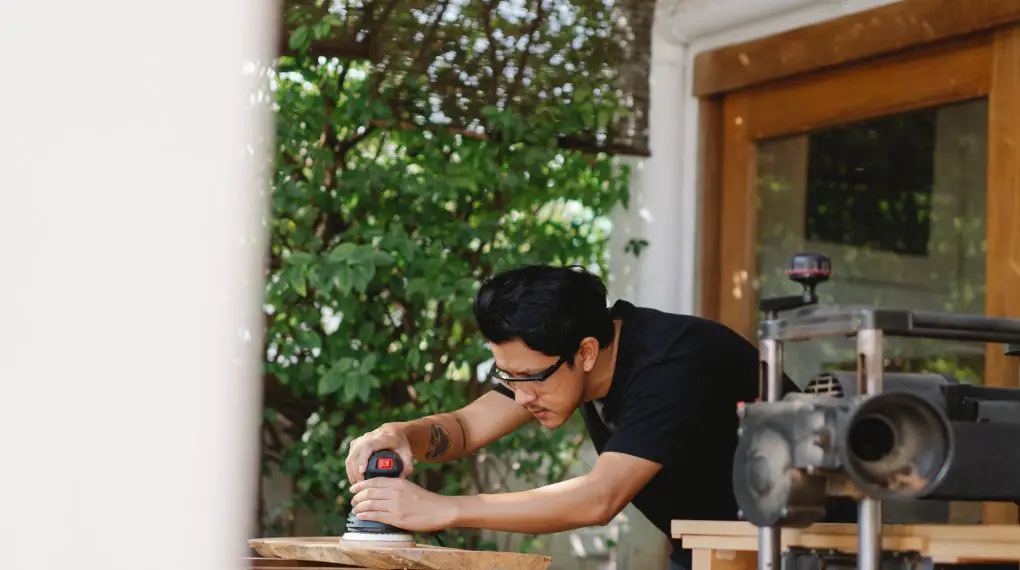Learning how to sand before polyurethane is crucial for achieving a smooth, long-lasting finish on your woodworking projects. This step-by-step guide will walk you through the process, providing practical and easy-to-follow advice.

Why Sanding Before Polyurethane is Important
Sanding before applying polyurethane serves multiple purposes. It not only enhances the adhesion of the finish but also eliminates minor imperfections on the wood surface. So, if you want your project to look professionally done, don’t skip this important step.
Things You’ll Need
Sandpaper (various grits: 80, 120, 220)
Wood filler (if needed)
Step 1: Prepare the Surface
Here’s how to prepare the surface…
Cleaning the Wood
Start by cleaning the wood surface to remove any debris, dust, or grease. Use a damp cloth to gently wipe the entire surface of the wood. You can also opt for a wood cleaner if the wood is excessively dirty or stained.
Drying the Wood
After cleaning, it’s crucial to let the wood dry out completely. Any moisture left on the surface can interfere with both the sanding process and the adhesion of the polyurethane. You can either air-dry the wood or speed up the process using a fan. If you’re in a particularly humid environment, you may want to wait a bit longer to ensure the wood is completely dry.
Check for Imperfections
Before moving to the next step, take some time to inspect the wood for any cracks, holes, or other imperfections. If you find any, fill them in with wood filler and let it dry according to the manufacturer’s instructions.
Step 2: Choose the Right Sandpaper
Here’s how to choose sandpaper…
Understanding Grit Numbers
Sandpaper comes in various grits, identified by numbers. Lower numbers like 80 grit are coarse and are ideal for removing imperfections and smoothing rough surfaces. Higher numbers like 220 grit are finer and suitable for finishing touches.
Starting with Coarse Grit
Begin your sanding process with a coarser grit like 80. The coarse sandpaper will remove any old paint, varnish, or imperfections in the wood more efficiently.
Progress to Finer Grits
After you have sanded the surface with the coarser grit and removed the imperfections, it’s time to switch to finer grits. Gradually work your way up to 120 grit and then 220 grit sandpaper. The 120 grit will smooth out the surface further, while the 220 grit will give it a polished look, making it ready for the polyurethane application.
Step 3: Sanding
Here’s the sanding process…
Selecting a Sander
You can either use an orbital sander for larger surfaces or a hand sander for smaller projects and intricate details. An orbital sander saves time and effort but can be overkill for small tasks. A hand sander gives you more control but can be more labor-intensive.
Directional Movement
When you begin sanding, always move in the direction of the wood grain. Sanding against the grain could lead to scratches that are difficult to remove and can affect the final appearance.
Sanding Technique
If you’re using an orbital sander, keep it moving so that you don’t create uneven spots. If you’re using a hand sander, use a steady, even pressure as you sand. Start with the coarse grit, covering the entire surface. Once that is done, switch to the next finer grit, and so on until you reach the finest grit you intend to use.
Checking Your Work
After you’ve finished sanding with each grit, take a moment to feel the surface. It should gradually become smoother as you progress to finer grits. Also, wipe down the surface with a cloth to remove any residual dust and check for areas you may have missed or that need additional attention.
Step 4: Clean the Surface
Here’s how to clean the surface…
Vacuuming the Dust
After you’ve completed the sanding process, the first thing you’ll need to do is get rid of the dust particles that have likely settled on the wood surface and surrounding area. Using a vacuum cleaner with a brush attachment, carefully suck up all the sawdust from the surface of the wood. Make sure you reach into any nooks, corners, or grooves where dust might hide.
Wiping Down the Surface
After vacuuming, you’ll want to wipe down the entire surface using a clean cloth. This helps remove any remaining fine particles that the vacuum might have missed. It’s recommended to use a microfiber cloth or a tack cloth, as these materials are highly effective at trapping dust.
Final Inspection
Once the surface is clean, run your hand over the wood to feel for any rough spots you might have missed during your initial sanding. If you find any, lightly sand those areas and clean them again.
For more articles on sanding, click here: Sanding: Your Full-Circle Guide to Smooth Mastery
Conclusion: How to Sand Before Polyurethane
Now that you know how to sand before polyurethane, your wood projects are sure to have a professional and long-lasting finish. Follow this guide carefully, and you’ll be rewarded with excellent results.